Excerpts from Jim Conrad's
Naturalist Newsletter
from the December 1, 2008 Newsletter written at Mayan Beach Garden Resort 20 kms north of Mahahual; Caribbean coastal beach and mangroves, ~N18.89°, ~W87.64°, Quintana Roo state, MÉXICO
THATCH PALM, OR CHIT
In the October 27th Newsletter I told you about the main palm around Yokdzonot, the Huano or Thatch Palm, Sabal yapa. Here in the much rainier, lusher southeast corner of the Yucatan Peninsula I'm not seeing Huanos, but a similar fan-palm-type species is abundant, shown below:
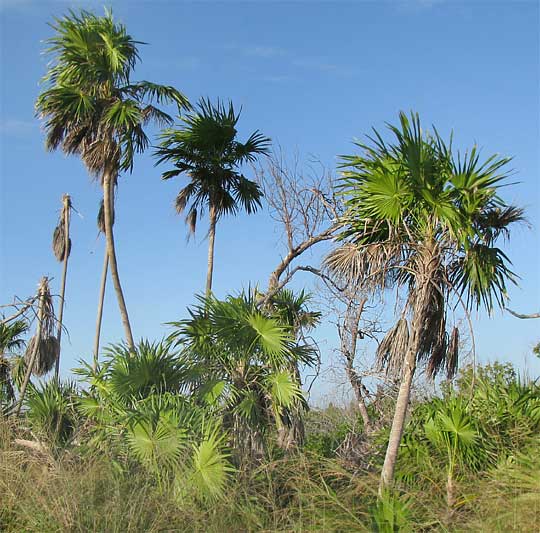
In Maya it's called Chit, but in North America often it goes by the name of Florida Thatch Palm. It's THRINAX RADIATA.
At first glance Chit and Huano fronds are very similar but if you look at the blades closely you'll notice important differences. Huano's frond stem, or petiole, continues up through the middle of the frond's blade, causing the frond to fold downward in the middle, a condition known as being "costapalmate." A picture showing a Huano frond doing this is at www.backyardnature.net/n/08/081027pq.jpg.
You can compare that with a Chit's frond, shown below:
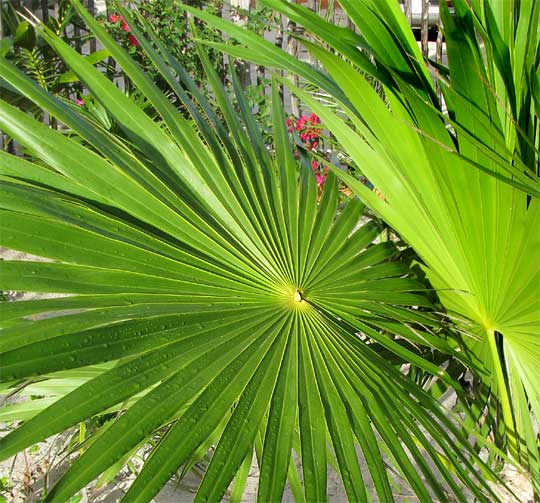
Notice how the Chit frond's petiole ends abruptly at the point where the frond segments radiate outward. Even more, at the petiole's connection point in the frond's center, notice that a toothlike growth rises perpendicular to the petiole. That toothlike item is referred to as a hastula. Hastulas occur on the fronds of several palm kinds but in the genus Thrinax hastulas are particularly well developed, and therefore they constitute a good field mark for the Chit.
Chit occurs in the Florida Keys, where it's listed as endangered, as well as throughout the Caribbean, and much of Belize and the Yucatán. In terms of land area occupied (discounting the vast stretches of sea) this is actually a fairly small distribution area. Chits are regarded as threatened in the Yucatán, which might strike you as curious if you see how prolifically Chit seeds germinate beneath standing trees.
To understand why the species is endangered, all you have to do is to look around, away from right beneath the tree. In this area Chit occupies the maybe 200- meter narrow ridge of sand between open water to the east and mangrove swamps to the west. That's also precisely where real-estate signs and scalped, occupied lots also are found. Habitat destruction and its limited distribution endanger Chit, not persnickety habitat requirements and not traditional broom-making by the Maya.
Below you see a large, white, honeybee-buzzed inflorescence of Chit flowers:
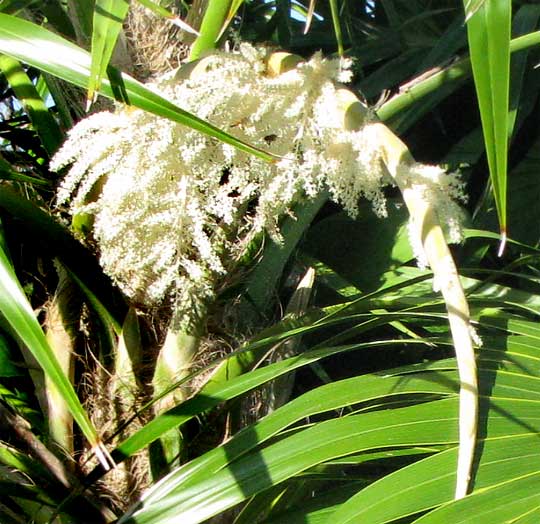
from the February 8, 2015 Newsletter issued from Río Lagartos, on the Yucatan Peninsula's northern coast (~N21.60°, ~W88.16°), Yucatán state, MÉXICO
THATCH PALM VARIATIONS
Immediately behind the dunes running along shore, the vegetation is stunted by the salty air, the persistent hot wind, and the sandy soil, which doesn't hold rainwater and contains relatively few nutrients. Below, you can see a cluster of Thatch Palms in an ocean of scrub behind the dunes:
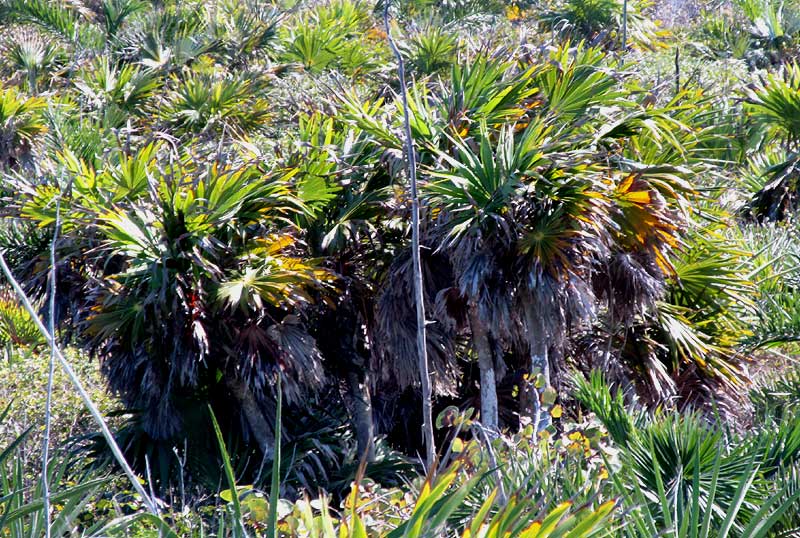
Closer up, below, you see that these individuals have smaller fronds but thicker trunks than the same species found in the interior in friendlier environments:
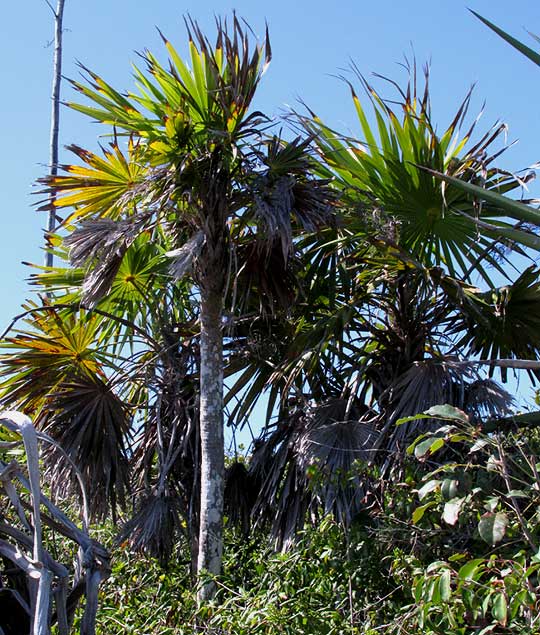
The fronds, hardly the size of garbage-can lids, are scorched by salt and sun, and tattered by stiff ocean breezes, as shown below:
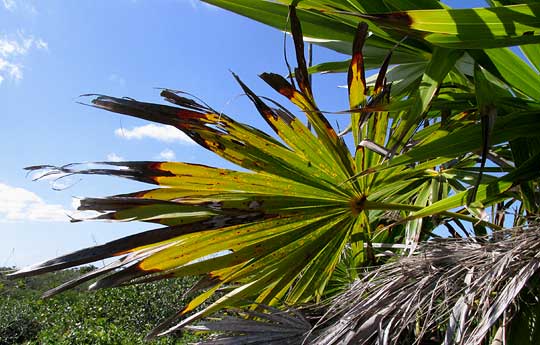
The fronds distinctive "hastulas," formed where the petiole attaches to the blade, on the blade's top surface, is normal, however, as shown below:
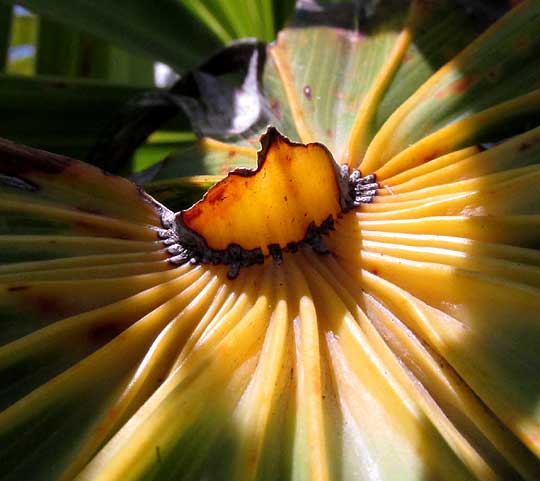
Frond petiole bases arising from thickets of fibers are split, also in the normal way, as seen below:
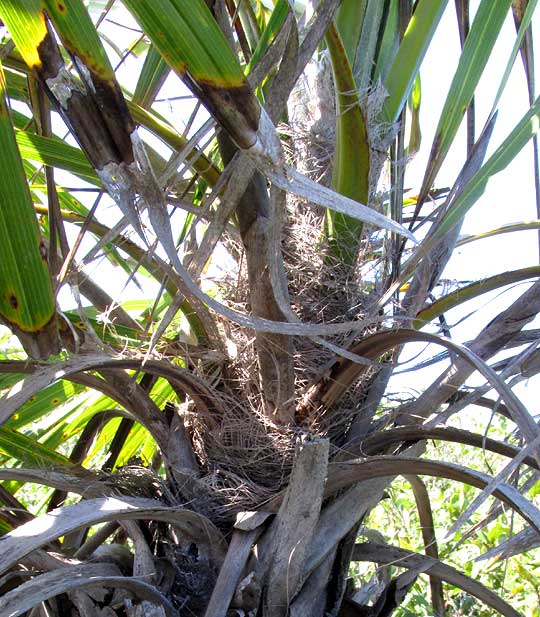
Old flowering heads extend well beyond the small fronds, as shown below:
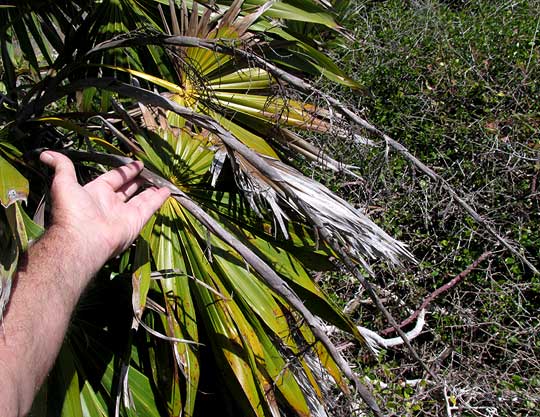
So, as you might expect, in this severe environment the plants' gross features alter to conform to conditions, but the basic structures -- the geometries and physics of things -- stay the same.
from the October 27, 2008 Newsletter written in Yokdzonot about half an hour west of Chichén Itzá Ruins in central Yucatán state, México
DOÑA NEIMA'S BROOM
In the Yucatán you read about another very useful, even smaller fan-palm, called Chit, or Chi'it in proper Maya, Thrinax radiata. It's the palm traditionally used for making brooms. Below, you can see my next-door neighbor, Doña Neima, who sometimes sends me cooked squash in a plastic bowl neatly covered with a white, cloth napkin, sweeping with a Chit broom:
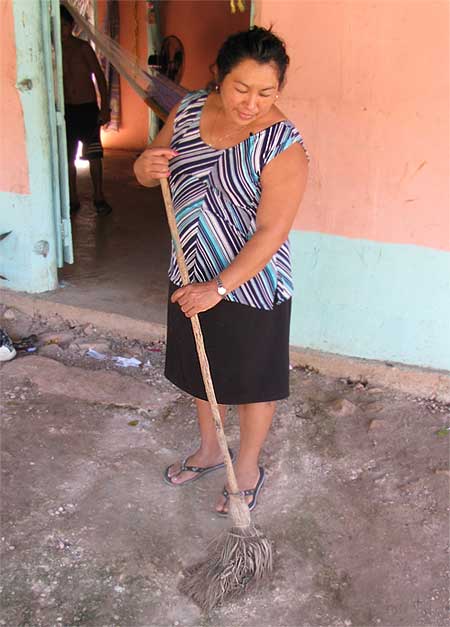
I don't find Chit here and the local folks say it doesn't grow locally. You have to go farther east, into Quintana Roo, to see it, so that sounds like it needs more rainfall than we get. The Chit brooms people here use are bought from outsiders.